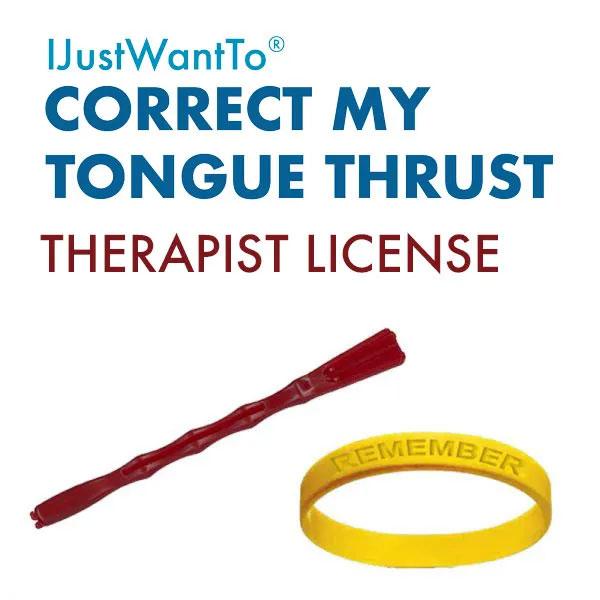Your tongue's position during sleep plays a crucial role in determining your sleep quality. This often-overlooked factor can be the difference between restful sleep and chronic sleep issues. Let's explore how tongue position impacts your sleep and what you can do about it. We’re using comments from users of the Correct My Tongue Thrust program.
The Science Behind Tongue Position
Natural Positioning
Your tongue's proper resting place is on the roof of your mouth, about half an inch behind your front teeth. When positioned correctly, it:
- Creates a proper seal
- Promotes nasal breathing
- Maintains open airways
- Supports optimal breathing
The Problem with Poor Positioning
As Jon E. discovered, "I thought as long as I was taping my mouth at night, that would solve my issues. Not exactly so, I have learned. By toning/strengthening my tongue as you have shown me, I am now seeing this was a much better bigger problem than I thought."
Impact on Breathing
The Breathing Connection
Research shows that many people who snore mouth-breathe during sleep. The open-mouth posture:
- Creates unstable airway passages
- Reduces nasal breathing benefits
- Affects breathing regulation
- Impacts sleep quality
Personal Experience
One participant notes: "It's like the airways are clearing up and my nose is operating at a whole new level. I can absolutely tell my breathing is improving in big ways through my nose."
Common Sleep Issues Related to Tongue Position
Physical Symptoms
Many people experience:
- Morning dry mouth
- Sore throat upon waking
- Morning headaches
- Daytime fatigue
- Restless sleep patterns
Sleep Quality Impact
Poor tongue positioning can lead to:
- Frequent waking
- Disrupted sleep cycles
- Reduced oxygen flow
- Poor sleep quality
- Morning exhaustion
Success Through Proper Positioning
Immediate Benefits
Participants report quick improvements:
- Better breathing patterns
- Reduced snoring
- More restful sleep
- Enhanced energy
- Clearer airways
Long-term Advantages
Over time, proper positioning leads to:
- Consistent good sleep
- Better breathing habits
- Improved daily energy
- Enhanced wellness
- Quality rest
The Transformation Process
Week 1-2
Early changes include:
- Increased awareness
- Initial improvements
- Better breathing
- Growing confidence
Week 3-4
Progress continues with:
- Significant changes
- Reduced symptoms
- Better sleep quality
- More energy
Week 5-7
Final transformation shows:
- Habit formation
- Natural positioning
- Consistent results
- Complete success
Research-Backed Results
Clinical Outcomes
Studies show:
- 94% stopped snoring
- 98% stopped mouth breathing
- 89% stopped waking with dry mouth
- 87% stopped waking unrefreshed
- Multiple symptom improvements
Real Success Stories
Carol's Experience
"I now get to sleep and stay asleep almost every night without even getting up to go to the bathroom. I have more energy. Please know I am very grateful and at last, rested."
Nina's Transformation
"The therapy was transformative in so many ways... I sleep better and wake up in the morning feeling refreshed and ready to go."
Making the Change
Daily Practice
Success requires:
- Regular Exercise
- Consistent practice
- Proper technique
- Progress monitoring
- Success tracking
- Awareness Building
- Position monitoring
- Breathing awareness
- Progress noting
- Success recognition
Supporting Better Sleep
Creating Good Habits
Focus on:
- Proper Positioning
- Correct placement
- Regular practice
- Position awareness
- Success maintenance
- Breathing Enhancement
- Nasal breathing
- Proper technique
- Regular practice
- Progress monitoring
Professional Insights
Expert Observation
Healthcare professionals note:
- Improved sleep quality
- Better breathing patterns
- Enhanced rest
- Overall wellness benefits
Clinical Success
Professional results show:
- High success rates
- Sustained improvements
- Patient satisfaction
- Long-term benefits
Your Path to Better Sleep
Getting Started
Begin with:
- Assessment
- Current patterns
- Sleep quality
- Breathing habits
- Tongue position
- Implementation
- Regular exercises
- Position awareness
- Progress tracking
- Success monitoring
Remember: As one participant concludes, "I can absolutely tell my breathing is improving in big ways through my nose. It's like the airways are clearing up and my nose is operating at a whole new level."
Start your journey to better sleep through proper tongue positioning today. With consistent practice and proper guidance, you can transform your sleep quality and enhance your overall well-being.

